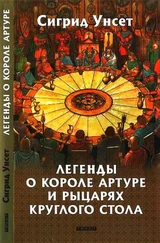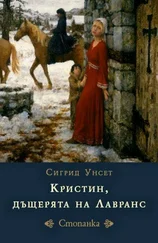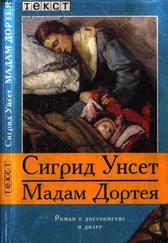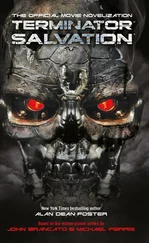If he had shared this with the class the other kids probably wouldn’t have cared, but the teacher might have been pissed. It would have been one of those times—and Cole has learned such times are not rare—when you got in trouble not for lying but for blurting out the whole truth.
It never even occurred to him to tell his father what he’d heard his mother tell Addy on the phone.
He didn’t know if he’d be leaving Little Leap, too. If it was just divorce his mother was looking for or Total Freedom.
What if she was planning to go all the way to New York? Or Berlin, which Addy always made sound like the coolest place on the planet. (According to Addy, New York City was finished .)
He couldn’t ask his mother about any of this. Not because he was afraid she’d be angry at him for eavesdropping but because he figured knowing he knew the truth would only make her more upset than she already was.
In any case, as far as he knew, the plan was for him to finish middle school and then go away to some boarding school, location not yet decided.
Sometimes he thought he could not wait for that day; other times he prayed it would never come.
When it was over, the teacher made him stand and squirm for a few seconds, just so he’d know his performance had been unsatisfactory. Finally allowed to return to his seat, which had to be directly in front of one of the bullies, Cole realized he had sweat through his shirt.
The teacher asked the class to tell Cole something about his new state. They shouted out things like Hoosiers and Indy 500, as if he’d come from some foreign country instead of right next door.
The crossroads of America .
He knew about Michael Jackson and Larry Bird and Indiana Jones (and that he had nothing to do with Indiana the state). His father had made him read Kurt Vonnegut. He had never heard of James Dean.
Try to think of it as an adventure.
The same desks and chairs. The same scuffed linoleum floors. The same smells (BO, new sneakers, mac and cheese).
The same bullies. The same whispering girls.
The new school was not really much of an adventure.
Until everyone started getting sick.
THE SCHOOL STANK OF LYSOL, and several times a day they all had to line up and wash their hands. Clean hands save lives was the message being hammered into them. When it came to spreading infection, they were informed, they themselves—school kids—were the biggest culprits. Even if you weren’t sick yourself, you could shed germs and make other people sick. Cole was struck by the word shed . The idea that he could shed invisible germs the way Sadie shed dog hairs was awesome to him. He pictured the germs as strands of hair with legs like centipedes, invisible but crawling everywhere.
Minibottles of sanitizer were distributed for use when soap and water weren’t available. Everyone was supposed to receive a new bottle each day, but the supply ran out quickly—not just at school but all over. Among teachers this actually brought relief, because the white, slightly sticky lotion was so like something else that some kids couldn’t resist. Gobs started appearing on chairs, on the backs of girls’ jeans, or even in their hair, and one boy caused an uproar by squirting it all over his face.
Never Sneeze into Your Hand, read signs posted everywhere. And: Keep Your Hands to Yourself (these had actually been there before but now had a double meaning).
If you had to sneeze, you should do it into a tissue. If you didn’t have a tissue, you should use the crook of your arm.
“But that’s vomitous ,” squealed Norris (one of the two whispering blondes).
These rules were like a lot of other school rules: nobody paid much attention to them.
Some school employees started wearing rubber gloves. Cafeteria servers, who already wore gloves, started wearing surgical masks as well.
Cole lost his appetite. He couldn’t stop thinking about hospitals. Flesh being cut open, flesh being sewn up.
How could you tell if you had the flu? The symptoms were listed on the board in every room: Fever. Aches. Chills. Dry cough. What must you do if you had these symptoms? YOU MUST STAY HOME.
Just as the school nurse was explaining all this, a boy sitting near the window started to cough and couldn’t stop. Then someone else started coughing, and then another person, and then another, and another, until half the room was coughing and the other half choking with laughter.
The nurse looked as if some pervert had just flashed her. She glared at the teacher, but he only shook his head. He was sleepy-looking that day, and paler than usual, and the next day he would be out.
Cole had just begun to adjust. The other kids weren’t so bad. He’d figured out how to turn being an outsider to his advantage.
“Chicago’s off the hook—totally different from a dinkburg like this. I can’t wait till we move back. Then you can come visit.” (This time, Cole knew perfectly well why he lied.)
It turned out that one of the bullies, Pete, was mostly a problem only when the other bully, Les, was around. And Pete was dying to visit Chicago.
Cole’s new teachers didn’t particularly like him, but that didn’t bother him. He’d been in the opposite situation, when a teacher had liked him a whole lot. She might as well have painted a target on his butt.
He didn’t hate school but he didn’t love it the way some kids (mostly girls, of course) did, either. This hadn’t changed.
Though no one knew (or must ever know), Cole had already developed a crush. On the other whispering blonde, Kaleigh.
Kaleigh and Norris were joined at the hip, and they were both apocalyptic .
BACK IN THE FALL, at the beginning of the first wave—the milder and less infectious flu that would kill mostly old people or babies or people already weak from other diseases—back when Cole was still living in Chicago, the assistant principal (the principal was out sick) stood on the stage of the school auditorium and introduced a man from the public health department.
The man was normal-looking, but he had the kind of speech defect that makes you talk like Elmer Fudd. The mike he was using made it worse. It was hard not to laugh, and some kids weren’t exactly trying.
“What’s the worst outbreak of disease in human history?” he asked. “Anyone?” And about half the audience roared back, “ AIDS! ”
“I knew you were going to say that.” In fact, the man sounded pleased that they’d got it wrong.
“I’m talking about a plague that killed nearly three-quarters of a million Americans and something like fifty, seventy-five, maybe even a hundred million people worldwide. And all that in just two little years.”
A few kids madly applauded this, for a mock, but the man ignored them.
“I’m talking about influenza, the Great Flu of 1918. There was a world war going on at the time, but in the end more people died from germs than from all the bombs and bullets put together. But get this. Most of the people who got the flu survived. So if all those millions of people died, how many people must’ve been infected? I can’t tell you the exact figure because we don’t know it. But try at least five hundred million. In those days that was, like, more than a third of the world’s population.”
In fact, there was a good chance everyone in the auditorium had at least one relation who’d been touched by the Great Flu, he said.
Читать дальше














